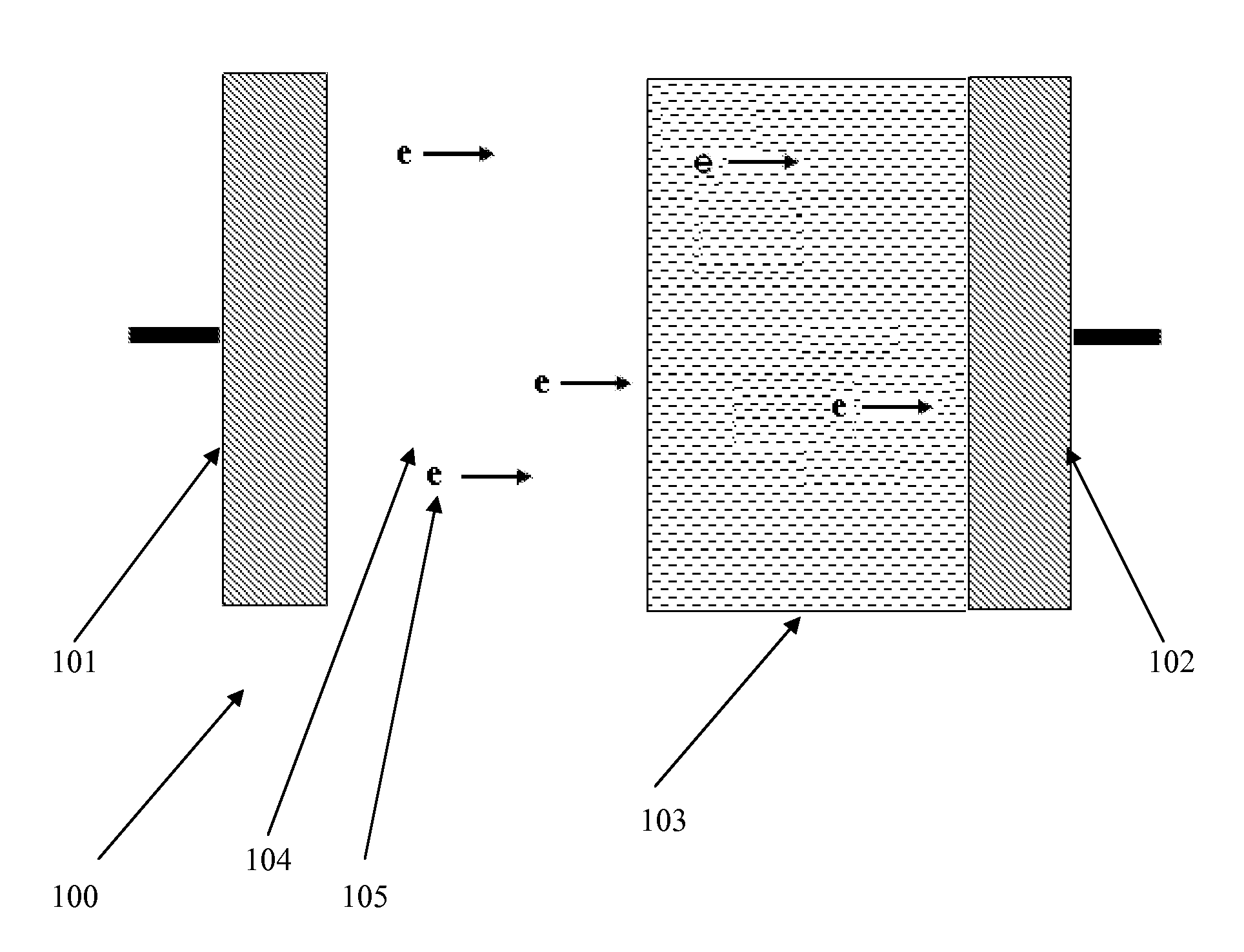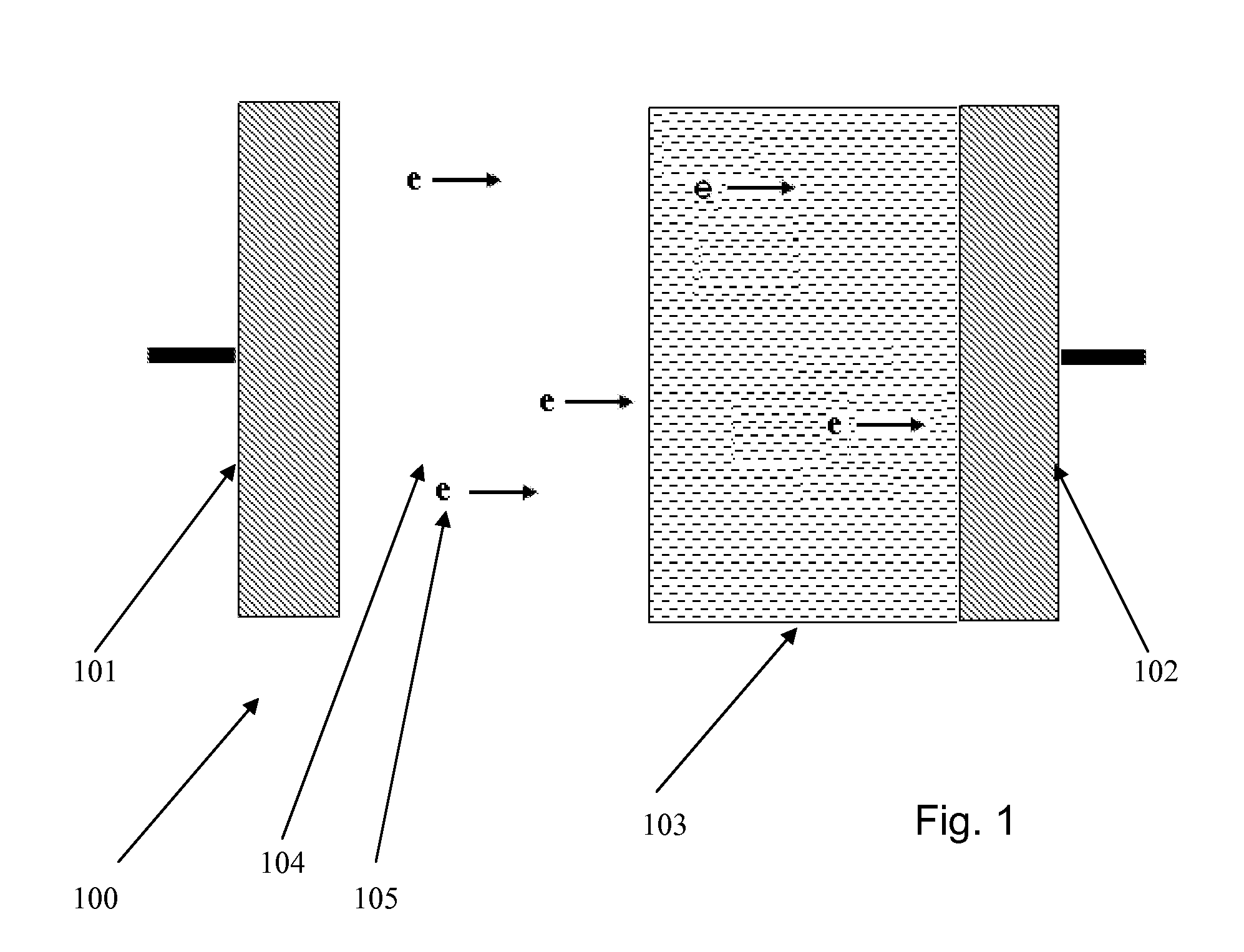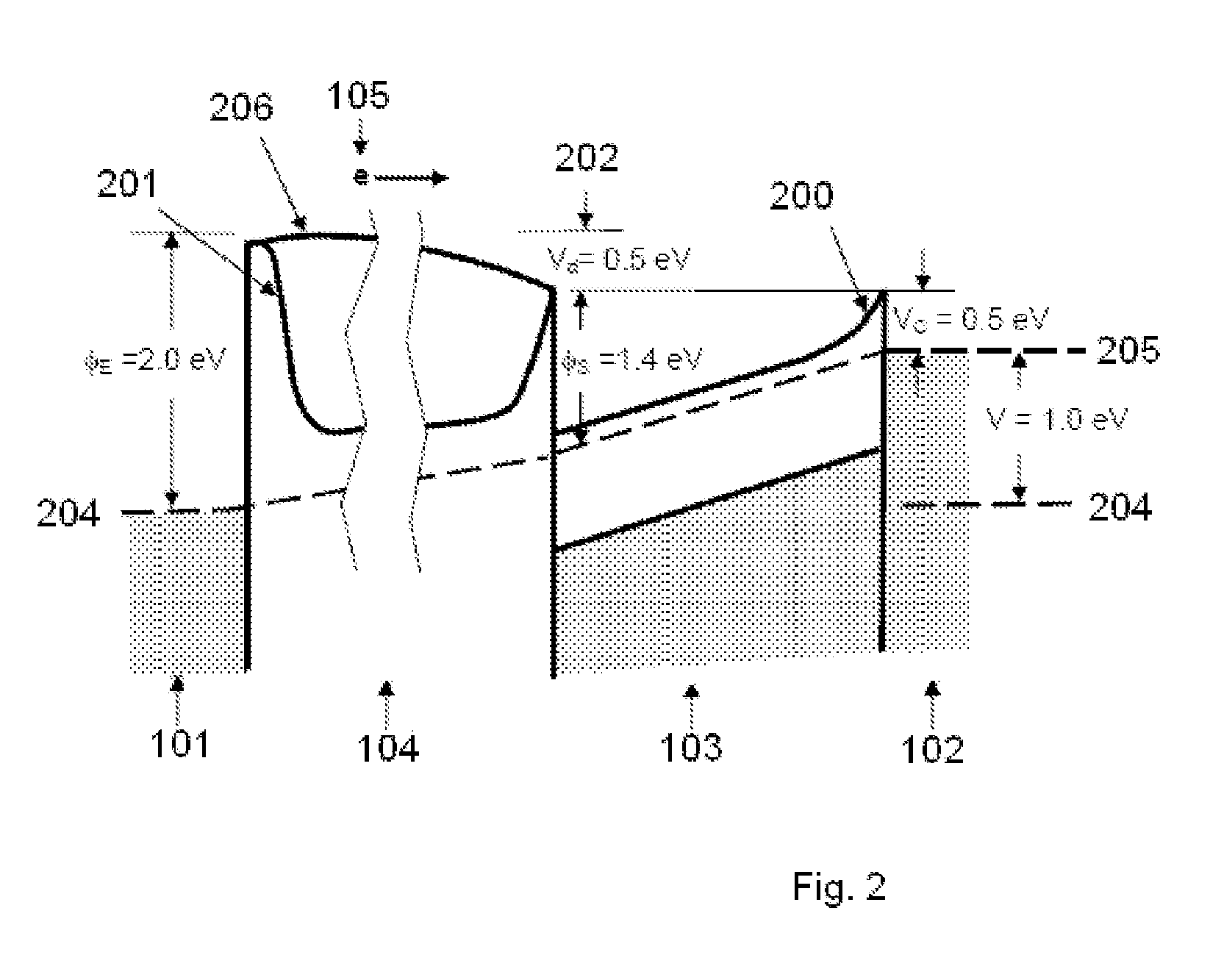Integrated Thermoelectric/ Thermionic Energy Converter
a technology of thermionic energy converter and integrated technology, which is applied in the direction of electrical equipment, generators/motors, electric discharge tubes, etc., can solve the problems of reducing performance, thermionic energy converter, and both types of devices have limitations, so as to improve the thermal efficiency of tite converter and reduce heat rejection temperature , the effect of double the output voltage of tite converter
- Summary
- Abstract
- Description
- Claims
- Application Information
AI Technical Summary
Benefits of technology
Problems solved by technology
Method used
Image
Examples
Embodiment Construction
[0027]In its most basic form, with reference to FIGS. 1 and 2, the TITE device 100 comprises an emitter 101, a metallic collector 102, and a semiconductor coating 103 on the collector 102. The emitter 101 is separated from the semiconductor—or, alternatively, an undoped semiconductor material layer—coating 103 by a gap 104 comprising either a vacuum (including quasi-vacuum, as described below) or plasma. As in current thermionic devices, cesium vapor, which is the most easily ionized of all the stable elements, can be used in the gap 104 in the plasma or quasi-vacuum. The gap 104 is generally on the order of 105 are emitted by the emitter 101, move across the vacuum or plasma gap 104, and are injected at high potential energy directly into the semiconductor or undoped semiconductor material coating 103 layer for thermoelectric conversion of their energy into additional electric power at the collector 102. Effectively, then, the electron current and energy output from the thermionic ...
PUM
 Login to View More
Login to View More Abstract
Description
Claims
Application Information
 Login to View More
Login to View More - R&D
- Intellectual Property
- Life Sciences
- Materials
- Tech Scout
- Unparalleled Data Quality
- Higher Quality Content
- 60% Fewer Hallucinations
Browse by: Latest US Patents, China's latest patents, Technical Efficacy Thesaurus, Application Domain, Technology Topic, Popular Technical Reports.
© 2025 PatSnap. All rights reserved.Legal|Privacy policy|Modern Slavery Act Transparency Statement|Sitemap|About US| Contact US: help@patsnap.com



